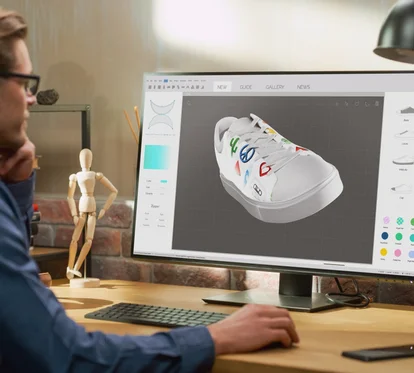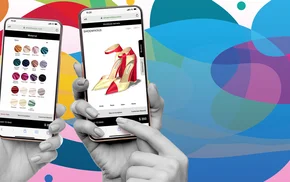In today’s world, meeting a customer’s needs is about much more than just selling products. To truly stand out in this increasingly competitive market, retailers need to develop an enticing value proposition that goes above and beyond. By bundling products and services together, they can provide customers with a holistic, highly personalised solution that meets all of their needs. Think about it — in a world where consumers are busier than ever, they're constantly looking for ways to simplify their lives. By delegating areas of their lifestyle to retailers that provide a comprehensive solution, they will be able to free up their time and energy to focus on the things that matter most. This could even make retailers indispensable in the eyes of their customers, allowing them not only to secure their loyalty but also to drive sales and engagement. Let’s explore some of the most exciting new retail propositions that are shaping the future of this sector. We’ll also take a closer look at the technologies driving these developments, and discuss how retailers can take advantage of the opportunities they bring to take their business to the next level.
Innovative retail propositions

To meet evolving consumer expectations, retailers need to switch their focus from just selling products to delivering an exciting value proposition that will make customers come back for more.

The value of product customisation
The retail sector has witnessed a dramatic rise in the demand for personalised products and services in recent years. By providing their customers with tailored solutions that cater to their individual needs and preferences, retailers can build stronger relationships with them and significantly increase their revenues. Some retailers even offer customers the option to personalise the finished product itself. The luxury ladies’ footwear company Shoenvious, for example, enables its customers to truly stand out from the crowd by creating a customised pair of shoes that is unlike any other on the streets. The company’s online store features a 3D shoe designer that lets customers choose from six different silhouettes and heel heights, as well as 100 different colours and materials and more than 300 styles. And if that’s not enough, there is also a 3D product builder app that customers can use to customise every little detail of the shoe or even add a unique inscription.
Another example of product customisation is Scentopia, a perfume-making workshop in Singapore. Anyone who has ever dreamed of having their own signature fragrance can make their wish come true by enrolling for a Scentopia workshop. After taking a fun and simple personality test to determine their scent preferences, customers proceed to one of the perfume-making stations, where a perfumer presents them with a bespoke perfume that perfectly matches their personality. Besides perfumes, customers can also use their signature scent to make room fragrances, bath oils, and scented candles.

The rise of subscription retail
In an attempt to build customer loyalty and secure a steady stream of revenue, a growing number of retailers are embracing a subscription-based model, which allows customers to sign up for recurring purchases of a product or service, often with added perks like discounts, exclusive content, or early access to new products. For example, if you live within the European Union, it’s no longer necessary to go to the local supermarket or pharmacy to get your vitamins because the Paris-based health startup Cuure offers a monthly subscription for personalised vitamin and supplement packs. After taking a quick questionnaire to determine their health needs and objectives, customers will get a personalised box of 30 daily sachets delivered directly to their doorstep each month. Each sachet contains the optimal daily dose of food supplements formulated by the company’s team of experts, which is made up of nutritionists, biologists, and pharmacy doctors. There is also an app that allows customers to track their progress and helps them reach their objectives. In the future, we may even be able to print the vitamins we need at home using our 3D printer.
One of the main reasons why the subscription model is becoming so popular is that a growing number of consumers, especially younger ones, are becoming increasingly disillusioned with the idea of owning things. Instead, they want the flexibility to try out different products without having to commit to a purchase. The online fashion retailer Rent the Runway is a prime example of this trend. The company offers several subscription plans that give customers access to a constantly rotating selection of clothes from more than 800 designers. Each customer can have anywhere between five and fifteen new items delivered to them each month, depending on which subscription plan they choose. They can wear the clothes for as long as they want and exchange them for something new once they are ready to make a change.
The London-based Bike Club offers something similar, but with children’s bikes. It’s basically a monthly subscription programme that allows customers to get a premium quality bike for their child and exchange it for a bigger one once they grow out of it. This eliminates the need for parents to buy a new bike every few years. Similarly, the Swiss athletic footwear company On offers a subscription to an innovative circularity programme, which enables customers to order a 100 per cent recyclable, high-performance running shoe named Cloudneo. The shoe can be exchanged for a new pair every six months, after which the old pair will be recycled into raw materials that are used to manufacture new products.

Is peer-to-peer retail the next big thing?
Another trend that seems to be gaining momentum lately is peer-to-peer retail, a business model that allows consumers to buy and sell products and services directly from and to one another, usually through an online marketplace or platform that connects buyers and sellers. Peer-to-peer retail provides numerous benefits to buyers and sellers alike. It allows buyers to find unique items or services that may not be available to them otherwise, often at lower prices than traditional retail channels. And it gives sellers access to a wider customer base, greater control over pricing and inventory, and the opportunity to build relationships with customers. For instance, the OVER Metaverse features a dedicated marketplace where users can display virtual clothing they designed and sell them to others as NFTs. The feature is also available to fashion designers and brands, giving users access to a wide selection of virtual clothing and allowing them to dress their avatars however they want.
While the rise of online shopping has undoubtedly had a positive impact on sales, it’s also had an unfortunate consequence in that it has significantly increased the number of returns. However, some retailers have found a rather creative way to approach this problem by implementing a peer-to-peer returns system. Instead of returning unwanted items to the retailer, the customer can ship them to another customer, who gets a practically brand-new item for a slight discount. For example, Greenlist is a platform that facilitates peer-to-peer returns by connecting customers who are looking for items that are out of stock with those who have said items but want to return them due to the wrong size or some other reason. When the platform finds a match, it generates a prepaid shipping label, which enables the returner to ship the item directly to the person who expressed interest in it. In addition to enabling retailers to save on shipping and warehouse fees, Greenlist also helps them cut their emissions and packaging waste, and increase customer loyalty.
How to embrace retail innovation
Innovation isn’t just a buzzword — it’s often what separates a successful business from a struggling one. In today's ever-changing world, businesses are well aware that the key to success is staying ahead of the game, and that means constant innovation. But innovation doesn't happen in a vacuum. It's not just about creating something new, but about actively seeking out partnerships and collaborations to generate fresh ideas and gain new perspectives. In fact, some of the most groundbreaking innovations have come from outside traditional industry boundaries. By opening up to new possibilities and working together, businesses can unlock a wealth of creativity, knowledge, and expertise. Lego, for instance, allows its fans to be a part of the creative process by submitting their ideas for new Lego sets through the Lego Ideas platform. Every year, the company chooses the most promising ideas and turns them into commercial products, with 1 per cent of the royalties going to the original designer.
And the British consumer goods giant Unilever has launched the Innovation Ecosystem portal, where it lists a number of technical challenges it struggles to solve and invites inventors, designers, academics, and startups to submit their own solutions. Similarly, the British retailer Marks & Spencer holds the biannual BEAM Academy hackathon, where colleagues from across the business come together to solve various challenges, such as those related to sustainability, digitising processes, and improving the customer experience. And at the US retail giant Walmart’s event Open Call, thousands of US businesses come to pitch their products to the retailer, many of which are then listed for sale in its stores. One thing to keep in mind is that innovation comes in all shapes and sizes, and there is no one tried and tested method that will work for everyone. After all, the future is full of surprises, and competition can emerge from the most unexpected places, which is why it’s crucial for retailers to be proactive if they want to stay ahead of the curve.
In closing
The retail industry is evolving rapidly, and retailers must develop compelling value propositions that go beyond just selling products to stand out in today’s increasingly competitive market. Personalisation, subscription-based models, and peer-to-peer retail are just some of the exciting new propositions that are shaping the future of the sector. By leveraging these developments, retailers can deliver highly personalised and convenient experiences that cater to the individual needs and preferences of their customers. Ultimately, this will not only help them build stronger customer relationships but also drive sales and engagement, making them indispensable in the eyes of their customers.


